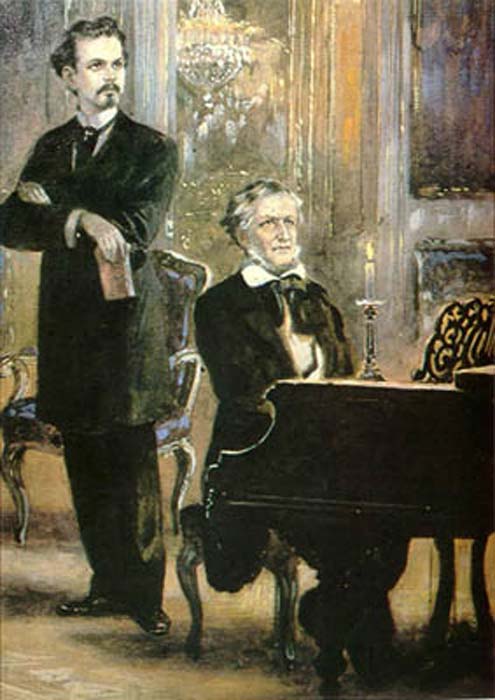
A Storybook Setting: The Famous German Fairytale Castle of Neuschwanstein
Neuschwanstein Castle is a grand castle in Bavaria, Germany that was built during the 19th century by Ludwig II, the King of Bavaria. During that century, castles were no longer the formidable defensive structures that they once were, as gunpowder and artillery had already changed the face of warfare for several centuries. That didn’t make the structures any less elaborate or impressive, however. The famous German Neuschwanstein Castle (translated into English as ‘New Swan Castle’) in particular is often called a ‘fairytale castle’.

The famous German Neuschwanstein Castle. (Feel good studio /Adobe Stock)
Rebuilding an Old Castle with New Features
While the castle’s exterior looks like a medieval castle (the king himself wrote that the castle was to be “in the authentic style of the old German knights' castles”), its interior was fitted with amenities that were considered state of the art during that time.
King Ludwig II was a great admirer (and later patron) of the renowned German composer, Richard Wagner. It was Wagner’s operas that partly influenced Ludwig’s desire to build the Neuschwanstein Castle. This ‘fairy tale castle’ was not built from scratch, but from an older castle known as Schwanstein Castle. The medieval Schwanstein Castle was in ruins when Ludwig’s father, Prince Maximillian II of Bavaria, decided to have it rebuilt in the ‘Gothic style’. This became the royal family’s summer residence, and it was here that Ludwig spent much of his childhood.

Ludwig II with Richard Wagner. (PD-US)
The famous castle is located in the Bavarian Alps, on a rugged cliff overlooking the Hohenschwangau Valley, and with mountains as its backdrop. This romantic mountain scenery surrounding the castle is said to be one of the factors influencing the king’s decision to have his castle built in that area. In his letter to Wagner, Ludwig wrote that “the location is one of the most beautiful to be found, holy and unapproachable, a worthy temple for the divine friend who has brought salvation and true blessing to the world.”
Ludwig added: “this castle will be in every way more beautiful and habitable than Hohenschwangau further down, which is desecrated every year by the prose of my mother; they will take revenge, the desecrated gods, and come to live with Us on the lofty heights, breathing the air of heaven.”
- Poppi Castle and the Murderous Madam Matilda
- The Dramatic and Bloody History of Nottingham Castle
- Radzyn Chelminski: The Captivating History of a Castle of the Teutonic Order

Neuschwanstein Castle. (Taiga /Adobe Stock)
While writing to Wagner, Ludwig also expressed that he was “looking forward very much to living there one day (in 3 years)”. The foundation stone of the castle was laid on September 5, 1869.

Neuschwanstein under construction. (Photograph c. 1882–85) (Public Domain)
Nevertheless, construction of Neuschwanstein castle progressed slower than the king was hoping for. The project was too comprehensive, and building on the mountain presented its own difficulties, mounting obstacles to the project. When Ludwig suddenly died in 1886, the castle had not been completed, and it is still left unfinished to this day.
The Famous German Castle’s Luxurious Features
Neuschwanstein castle was equipped with many luxurious features. For example, there is a beautiful inner garden (which includes an artificial cave) surrounded by a walled courtyard within the structure. Another example of this opulence can be found in the throne room, which was built in the Byzantine style. This room, which was 15 m (49.2 ft.) in height, has two levels, both of which are encircled by galleries.

The Throne Hall. (Public Domain)
The mural paintings that adorn the various rooms are also a notable feature of Ludwig’s ‘fairy tale castle’. These paintings were inspired by the operas of Wagner, which in turn were modelled on the medieval legends of Germany. For example, in the salon there are murals depicting scenes from the legend of Lohengrin.
Incidentally, this legend is part of the Knight of the Swan tradition, and Ludwig is said to have identified himself with the Swan Knight since he was a child. In another room, the Singers’ Hall, murals from the Parzival saga, which is the prequel of the Lohengrin saga, can be seen.
- Ludwig II of Bavaria: Suicide or Murder? How Did the Swan King Meet His End?
- A Peek into The Paranormal Activity at Haunted Castles in Romania
- The Mysterious and Tragic Life of Kaspar Hauser

One of the bedrooms. (Public Domain)
Neuschwanstein Castle Today
Neuschwanstein Castle is one of the most visited castles in Germany. On average, 1.4 million people visit this monument each year, and during the summer 6000 visitors a day usually pass through rooms that had been designed for solitary habitation.
Preservation of the structure is a major issue for Neuschwanstein castle. Movement in the foundation area, for instance, needs to be continuously monitored, and renovation has to be done from time to time on the limestone façade, which suffers from the detrimental effects of the harsh climate.

Neuschwanstein Castle. (naumenkophoto /Adobe Stock)
Top image: The famous German Neuschwanstein Castle. Source: Yasonya /Adobe Stock
By Wu Mingren
Updated on November 26, 2020.
References
Bayerische Schlösserverwaltung, 2017. Neuschwanstein. [Online]
Available at: http://www.neuschwanstein.de/englisch/palace/index.htm
Castles of the World, 2015. Neuschwanstein. [Online]
Available at: http://castles.org/dokuwiki/castlesoftheworld/germany/neuschwanstein
neuschwansteincastle.net, 2017. Neuschwanstein Castle. [Online]
Available at: http://neuschwansteincastle.net/
www.bavaria.by, 2017. Neuschwanstein Castle. [Online]
Available at: http://www.bavaria.by/neuschwanstein-castle-bavaria
www.germany.travel, 2017. Neuschwanstein Castle – Germany's fairytale castle.. [Online]
Available at: http://www.germany.travel/en/towns-cities-culture/palaces-parks-gardens/famous-figures/fairytale-refuges-for-the-fairytale-king/neuschwanstein-castle.html
















Comments
I think that two castles in particular inspired king Ludwig in the construction of Neuschwanstein: Wartburg near Eisenach and the Castle of Pierrefonds near Paris. Both were reconstructed during this period and the king was very impressed with the two projects. That and the inspiration from Richard Wagner music, of course